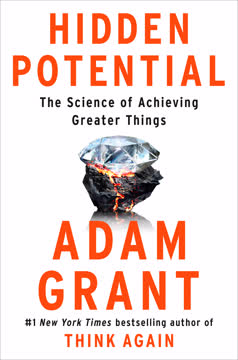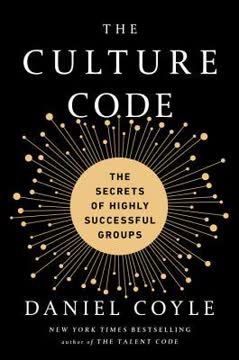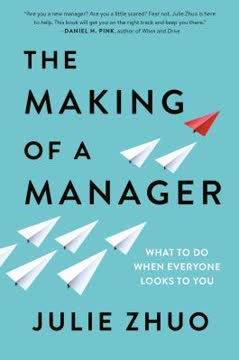Key Takeaways
1. Compassionate Productivity: The Key to Business Success
"Compassionate productivity is the idea that recognizing employees as human beings with their own struggles, triumphs, goals, and motivations results in better overall work."
Human-centric approach. Compassionate productivity is a paradigm shift from traditional performance incentives. It focuses on understanding and supporting employees' individual needs, challenges, and aspirations. This approach leads to increased loyalty, trust, and overall job satisfaction.
Benefits of compassion. By showing empathy and understanding, organizations can:
- Reduce stress and burnout
- Increase creativity and innovation
- Improve problem-solving abilities
- Enhance team collaboration
- Boost overall productivity
Implementation strategies. To foster compassionate productivity:
- Encourage open communication
- Provide flexible work arrangements
- Offer professional development opportunities
- Recognize and celebrate individual and team achievements
- Create a supportive work environment that values work-life balance
2. The Five Buckets of Productivity: A Holistic Approach
"The tools in this book are designed to work in totality."
Comprehensive framework. The five buckets of productivity provide a holistic approach to improving organizational performance:
- Absence Management and Presenteeism
- Well-Being (Well-Zilience)
- Engagement
- Technology
- Optimizing Your Workday
Synergistic effect. Implementing strategies across all five buckets creates a multiplicative effect on productivity. Each bucket reinforces the others, leading to a more resilient and high-performing organization.
Continuous improvement. Regularly assess and refine strategies within each bucket to adapt to changing organizational needs and employee expectations. This ongoing process ensures sustained productivity gains and a competitive edge in the market.
3. Absenteeism and Presenteeism: Hidden Costs to Organizations
"Presenteeism can cause ten times more financial loss for businesses than absenteeism."
Understanding the impact. Absenteeism and presenteeism are significant drains on organizational productivity and finances. While absenteeism is more visible, presenteeism – being physically present but mentally disengaged – can be even more costly.
Measuring the problem. To address these issues:
- Calculate absenteeism rates using standardized formulas
- Conduct employee surveys to assess presenteeism levels
- Analyze productivity data to identify patterns and trends
Mitigation strategies:
- Implement flexible work arrangements
- Provide comprehensive health and wellness programs
- Offer mental health support and resources
- Foster a culture that encourages work-life balance
- Train managers to recognize and address signs of burnout
4. Well-Being: The Foundation of a Thriving Workforce
"If you improve your lives, as each one of us must do in one way or another, it will make you happier. And if you're happier . . . We'll be more productive."
Holistic well-being. A comprehensive approach to employee well-being encompasses:
- Emotional and physical health
- Financial stability
- Occupational fulfillment
- Social connections
ROI of well-being programs. Investing in employee well-being yields significant returns:
- Reduced healthcare costs
- Increased productivity
- Improved employee retention
- Enhanced organizational reputation
Implementation strategies:
- Offer health and fitness programs
- Provide financial education and planning resources
- Create opportunities for social interaction and team building
- Encourage professional development and career growth
- Foster a culture that values work-life balance and personal time
5. Employee Engagement: Beyond Job Satisfaction
"Employee engagement focuses not on how much employees like their jobs but rather on how compelled they feel to do well in their position."
Engagement vs. satisfaction. While job satisfaction is important, engagement goes deeper, fostering emotional commitment and dedication to organizational goals. Engaged employees are more productive, innovative, and likely to stay with the company.
Factors influencing engagement:
- Clear communication of expectations
- Recognition of contributions
- Opportunities for growth and development
- Sense of purpose and meaning in work
- Strong relationships with colleagues and leadership
Measuring and improving engagement:
- Conduct regular engagement surveys
- Implement goal alignment strategies
- Collect and analyze data on performance and productivity
- Provide leadership training focused on engagement techniques
- Create personalized development plans for employees
6. Technology: A Double-Edged Sword for Productivity
"Technology can be excellent for your organization and your productivity. It just takes some consideration to find the right options."
Strategic implementation. While technology can significantly boost productivity, it's crucial to choose and implement tools thoughtfully. The goal is to enhance work processes without creating new distractions or complications.
Productivity-enhancing technologies:
- Communication and collaboration platforms
- Project management tools
- Time-tracking software
- Knowledge management systems
- Automation tools for repetitive tasks
Best practices:
- Conduct thorough needs assessments before adopting new technologies
- Provide comprehensive training and support for new tools
- Regularly evaluate the effectiveness and relevance of existing technologies
- Establish clear guidelines for technology use to minimize distractions
- Encourage a balance between tech-enabled and human interactions
7. Optimizing Your Workday: Getting 30 Hours Out of 24
"Walkersize captures staying healthy and bouncing back."
Maximize efficiency. Optimizing your workday involves strategic planning and execution of tasks to increase productivity without extending work hours. The goal is to accomplish more in less time while maintaining work-life balance.
Productivity-boosting strategies:
- Prioritize tasks based on importance and urgency
- Use time-blocking techniques to focus on specific activities
- Implement the "two-minute rule" for quick tasks
- Take regular breaks to maintain focus and energy
- Utilize standing or treadmill desks to incorporate movement
Personalized approach. Recognize that productivity strategies are not one-size-fits-all. Experiment with different techniques to find what works best for your individual work style and preferences. Regularly reassess and adjust your methods to continually improve efficiency.
8. Adapting to Change: Continuous Improvement in the Workplace
"If you can adapt to three of these, you'll make a great leap. There is a saying, 'How do you eat an elephant?' Answer: 'One bite at a time.'"
Embracing change. In today's rapidly evolving business landscape, adaptability is crucial for sustained success. Organizations and individuals must continuously learn, grow, and adjust to new challenges and opportunities.
Strategies for adaptation:
- Cultivate a growth mindset
- Encourage experimentation and learning from failures
- Provide ongoing training and development opportunities
- Foster a culture of innovation and continuous improvement
- Regularly reassess and update processes and strategies
Incremental progress. Focus on making small, consistent improvements rather than attempting drastic changes all at once. This approach reduces resistance to change and allows for more sustainable long-term growth and development.
Last updated:
FAQ
1. What is "Work Smart Now" by Richard Polak about?
- Productivity with Compassion: The book focuses on how organizations and individuals can boost productivity by working smarter, not harder, through the concept of "compassionate productivity."
- Holistic Approach: It covers five key components: absence management and presenteeism, well-being, engagement, technology, and optimizing the workday.
- Actionable Framework: Polak provides practical tools, research-backed strategies, and real-world examples to help leaders and employees implement productivity improvements.
- Blending Work and Life: The book challenges the traditional work/life balance notion, advocating for an integrated approach where work is seen as part of life.
2. Why should I read "Work Smart Now" by Richard Polak?
- Proven Expertise: Richard Polak draws on over 40 years of global HR consulting experience with major companies, offering insights that are both practical and credible.
- Immediate ROI: The book presents clear business cases and hard numbers showing how productivity improvements can lead to significant financial gains.
- Employee-Centric Solutions: It emphasizes empowering employees, reducing burnout, and fostering a positive workplace culture, which benefits both people and profits.
- Comprehensive Guidance: Readers receive step-by-step advice on measuring, implementing, and sustaining productivity initiatives at both organizational and personal levels.
3. What are the key takeaways from "Work Smart Now" by Richard Polak?
- Compassionate Productivity Works: Treating employees as whole people, not just workers, leads to higher engagement, innovation, and retention.
- Measurement is Essential: You can’t manage what you can’t measure—track absenteeism, presenteeism, engagement, and well-being to drive improvement.
- Technology as a Tool: Use technology strategically to enhance communication, data access, and wellness, but avoid tech overload.
- Optimize the Individual Workday: Structuring your day, focusing (not multitasking), and prioritizing important tasks can dramatically increase personal productivity.
4. What is "compassionate productivity" as defined in "Work Smart Now" by Richard Polak?
- Balanced Approach: Compassionate productivity is the middle ground between harsh, fear-based motivation and a laissez-faire attitude, focusing on both results and employee well-being.
- Human-Centered Management: It recognizes employees as individuals with unique struggles and strengths, fostering trust, loyalty, and higher performance.
- Contrast with Traditional Incentives: Unlike traditional performance incentives that rely on stress and fear, compassionate productivity reduces burnout and encourages innovation.
- Practical Implementation: It involves mindfulness, empathy, and forgiveness in management, and requires a supportive workplace culture to be effective.
5. What are the five key components of productivity in "Work Smart Now" by Richard Polak?
- Absence Management & Presenteeism: Addressing both physical absence and the problem of employees being present but disengaged or unwell.
- Well-Being (Well-Zilience): Focusing on emotional, physical, financial, occupational, and social well-being to create a resilient workforce.
- Engagement: Building emotional attachment and commitment to the organization, which drives higher productivity and retention.
- Technology: Leveraging the right tools to improve communication, data access, and wellness without overwhelming employees.
- Optimizing the Workday: Structuring individual routines for maximum focus, prioritization, and energy management.
6. How does "Work Smart Now" by Richard Polak recommend measuring and addressing absenteeism and presenteeism?
- Absenteeism Measurement: Use HRIS data or simple formulas to calculate absence rates and associated costs, benchmarking against industry standards.
- Presenteeism Measurement: Conduct anonymous surveys (like the WHO Health and Work Performance questionnaire) to assess engagement and health-related productivity loss.
- Addressing Causes: Tackle root causes such as stress, poor management, and lack of wellness initiatives through clear communication, supportive culture, and health benefits.
- Financial Impact: The book provides formulas and case studies showing how even small reductions in absenteeism and presenteeism can save millions annually.
7. What strategies for employee well-being (well-zilience) are highlighted in "Work Smart Now" by Richard Polak?
- Emotional and Physical Health: Encourage therapy, exercise, and healthy habits as foundational to productivity and happiness.
- Financial Wellness: Offer financial education, fair pay, and flexible schedules to reduce money-related stress.
- Occupational and Social Well-Being: Help employees find meaning in their work and foster a sense of community and teamwork.
- ROI of Wellness Programs: The book cites research showing that well-designed wellness programs can yield $3–$4 in savings for every $1 invested.
8. How does "Work Smart Now" by Richard Polak distinguish between employee engagement and job satisfaction?
- Emotional Attachment vs. Contentment: Engagement is about emotional connection and commitment to the organization’s mission, while satisfaction is simply being content with the job.
- Impact on Performance: Engaged employees go above and beyond, innovate, and stay longer, whereas satisfied employees may do only what’s required.
- Measurement: Use targeted surveys and goal alignment to assess and boost engagement, not just satisfaction.
- Leadership’s Role: Transformational leadership and open communication are key drivers of engagement, according to the book.
9. What role does technology play in productivity according to "Work Smart Now" by Richard Polak?
- Strategic Selection: Choose a few essential apps (email, data management, task management) to streamline work without causing distraction.
- Improving Communication: Implement collaboration tools and knowledge management systems to reduce wasted time and improve information flow.
- Wellness Support: Use wearable trackers, wellness apps, and gamification to encourage healthy habits and engagement.
- Avoiding Overload: The book warns against tech overload, emphasizing simplicity and alignment with business goals.
10. What are the best practices for optimizing the individual workday in "Work Smart Now" by Richard Polak?
- Prioritize Important Tasks: Identify and schedule the most important (not just urgent) tasks for focused work blocks.
- Avoid Multitasking: Focus on one task at a time, as multitasking reduces quality and increases errors.
- Structure and Breaks: Work in 90-minute focused intervals with regular breaks, incorporating movement or short walks to boost creativity and energy.
- Email and Distraction Management: Limit email checks to set times, turn off notifications, and use tools like dictation and keyboard shortcuts to save time.
11. How does "Work Smart Now" by Richard Polak recommend implementing and sustaining productivity improvements?
- Data-Driven Change: Collect both qualitative (surveys, interviews) and quantitative (metrics, financials) data to establish a baseline and track progress.
- Comprehensive Planning: Develop a holistic plan that integrates all five productivity components, rather than piecemeal efforts.
- Leadership Commitment: Appoint a Director of Productivity and ensure leadership models the desired behaviors and supports the initiatives.
- Continuous Measurement: Reassess and adjust strategies every six months using consistent surveys and metrics to ensure sustained improvement.
12. What are the most impactful quotes from "Work Smart Now" by Richard Polak and what do they mean?
- “Get More Done in Less Time—and Do It with Joy.” This encapsulates the book’s philosophy of working smarter, not harder, and finding fulfillment in the process.
- “Do Only the Things That Only You Can Do.” Focus on your unique strengths and delegate or discard the rest to maximize impact.
- “If time is our second-greatest asset, what is our first? It’s our integrity.” Polak emphasizes that productivity is meaningless without ethical conduct and trust.
- “The whole is greater than the sum of the parts.” Implementing all productivity components together creates a synergy that far exceeds isolated efforts.
- “Work is life and life is work. They must be together.” The book challenges the work/life balance myth, advocating for integration and harmony between the two.
Review Summary
Work Smart Now receives high praise from readers, with an average rating of 4.28/5. Reviewers appreciate Polak's focus on compassionate productivity, employee empowerment, and work-life balance. The book is praised for its practical advice, easy-to-digest format, and unique approach to workplace management. Readers find it valuable for both managers and employees, highlighting its potential to improve workplace culture and productivity. Many reviewers express enthusiasm for implementing Polak's strategies in their own work environments.
Similar Books










Download PDF
Download EPUB
.epub digital book format is ideal for reading ebooks on phones, tablets, and e-readers.




